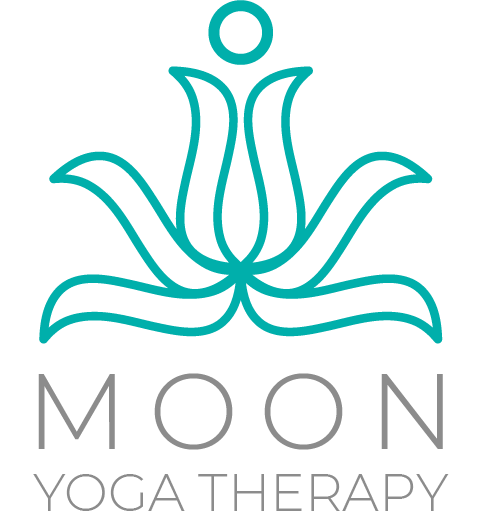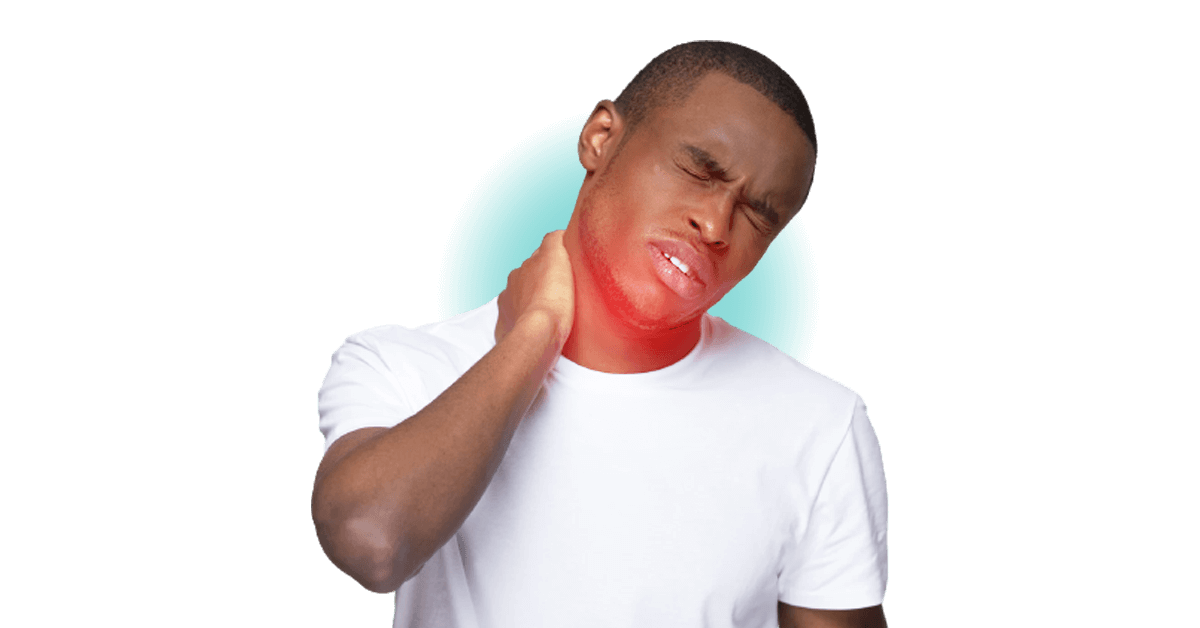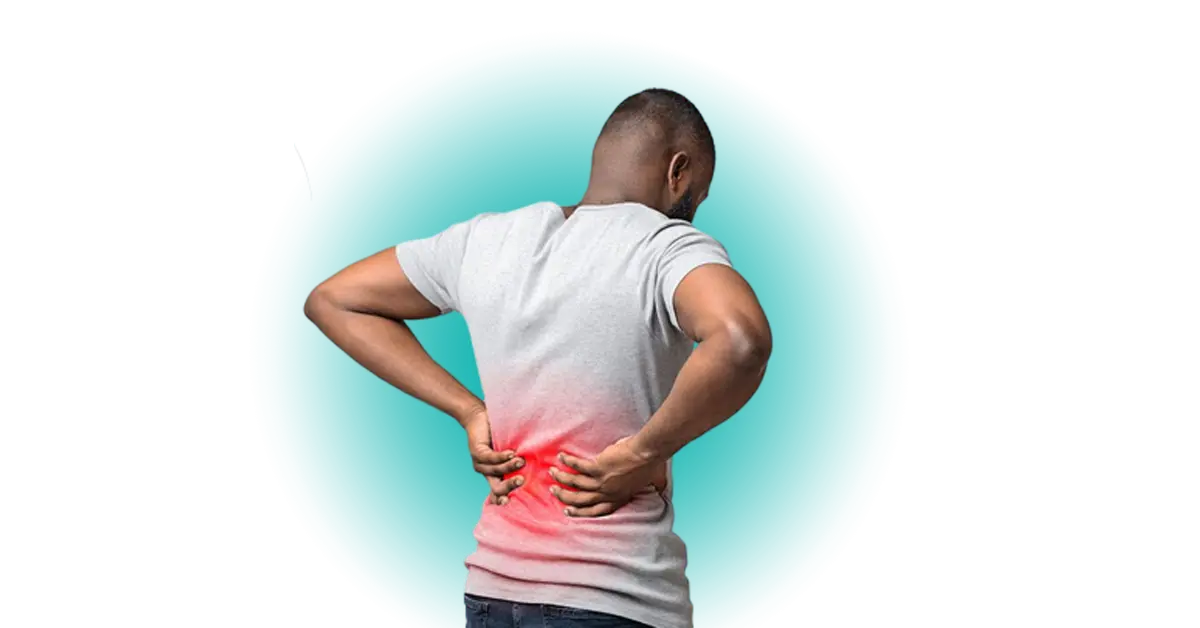If you suffer from the following symptoms, you are very likely to have Cervical Spondylosis:
Neck pain
Feeling of heaviness in the shoulder blades or trapezius muscles.
Frequent headaches
Dizziness.
The good news is that yoga and yoga therapy can help slow down the evolution of Cervical Spondylosis and improve your daily life and reduce your pain.
In this article, I will help you, thanks to my experience as a pharmacist and certified yoga therapist, to better understand Cervical Osteoarthritis, and explain how I manage to help my patients concerned (about 78% of my patients) and how I can help you too.
What is Cervical Spondylosis (Cervical Osteoarthritis), and how does it settle?
Cervical Spondylosis (or Cervical Osteoarthritis) is osteoarthritis localized in the cervical area. It is caused by wear and tear of the cartilage of the cervical vertebrae, and it is accentuated by the permanent solicitation of it due to a repeated gesture, or an inadequate posture increasing the pressure on this region of the body.
No wonder, it is one of the most common reasons for pain in the cervical area among people who work in front of a computer for long hours.
Yoga Therapy Techniques for Cervical Spondylosis (Cervical Osteoarthritis)
Yoga therapy techniques consist of adapting a mixture of yoga postures, breathing exercises, and a nutritious diet to each person (Cervical Spondylosis patient) to improve the flexibility of the cervical vertebrae and relieve neck pain.
What is Yoga Therapy?
Yoga therapy is a therapy that consists of using yoga exercises (Postures, Breaths, Meditation, etc ) with the aim of improving physical and mental health and reducing or even eliminating chronic symptoms.
Practiced by a certified therapist, it offers patients an additional tool for managing their symptoms, including the symptoms of Cervical Spondylosis (Cervical Osteoarthritis).
How does yoga relieve neck pain?
The younger yoga is practiced, the more it participates in the prevention of many pathologies, including head and neck disease, thanks to its impact on the flexibility of the whole body, reducing stress, calming the mind, and promoting a positive attitude daily.
Indeed, most patients who consult me for neck pain are subject to a high level of stress. The work on breathing as a part of yoga therapy is then very interesting and effective to reduce stress and relieve pain.
A team of American researchers, Dimitriadis, Kaprelli, Strimpakos & Oldham (2013) analyzed the relationship between breathing and neck pain. And concluded a relationship between the weakness of the respiratory muscles and neck pain.
Abdominal breathing as a part of the treatment
Most of my patients notice a real improvement in their Cervical Spondylosis situation after about 10 days of abdominal breathing practice.
Abdominal breathing, called diaphragmatic, is a basic breath in the practice of yoga. It consists of engaging the diaphragm during inspiration to allow it to stretch and thus increase the respiratory capacity of the lungs. At the expiration, it is released (passive process).
Here are the steps to practice abdominal breathing for Cervical Spondylosis by yourself safely:
Put yourself in a comfortable position (sitting, lying down, as it suits you).
Place one hand on the chest, and another hand on the belly (navel area).
Inhale slowly through the nose for 5-10 seconds, inflate the belly and feel your hand moving away with movement.
Exhale slowly through the nose (usually at least the same time as the inhalation, at best double it.) and release the abdomen and chest.
Repeat several times and take note of the change that this breath brings to your mind and body.
Yoga exercises (poses) for Cervical Spondylosis (Cervical Osteoarthritis)
Yoga exercises can also be very helpful in reducing neck pain, here are two of the exercises (poses) I prescribe most often for Cervical Spondylosis (Cervical Osteoarthritis):
Bitilasana Marjaryasana (cat/cow) allows a flexible movement of the neck and the entire spinal column and is synchronized with breathing.
Balasana (posture of the child) with or without support.
Warning: If you have severe Cervical Spondylosis (Cervical Osteoarthritis), yoga postures should be performed under the supervision of a yoga therapist.
Apart from the exercises and as a rule of thumb, when working on your computer, it is important to arrange your posture in order to avoid the neck remaining in hyperextension for a long time, choose a suitable seat, and adjust the position of the screen to avoid long positions in flexion (screen too low) or extension (screen too high).
What is the role of a nutrition diet in the treatment of neck pain?
Diet also plays a crucial role in slowing down the progression of Cervical Spondylosis and reducing pain. For example, it is advisable to increase the daily intake of omega 3 (cod liver oil, rapeseed oil, /Chia seeds…) as well as red fruits for their anti-inflammatory properties.
However, we need to audit your lifestyle and nutrition habits before prescribing a personalized diet to assist your overall treatment program for Cervical Spondylosis.
These exercises and advice practiced with a specialized yoga therapist considering your physical abilities and your emotional needs will be an ally daily to better manage your pain and slow down its evolution.
If you have a question, leave a comment below. Otherwise, if you need a personalized yoga therapy consultation for your Cervical Spondylosis case, you may contact me through the link below, and I would be happy to offer you a free discovery call to find out whether and how yoga therapy can help you in your specific case.
References:
Cramer H, Lauche R, Hohmann C, Lüdtke R, Haller H, Michalsen A, Langhorst J, Dobos G. Clin J Pain. 2013 Mar;29(3):216-23. doi: 10.1097/AJP.0b013e318251026c. PMID: 23249655.
Vungarala Satyanand, T.Gopalakrishnaiah, Elakkiy Panneerselvam,Shaik Mahaboobvali, Sheik Ahammad Bacha, Vanka Sarala. Effects of yogasanas on cervical spondylosis.. IAIM, 2015; 2(7): 6-10.
Dimitriadis, Zacharias & Kapreli, Eleni & Strimpakos, Nikolaos & Oldham, Jacqueline. (2016). The association between the physical activity of patients with idiopathic chronic neck pain and their psychological state. Archives of Hellenic Medicine. 34.
Dimitriadis Z, Kapreli E, Strimpakos N, Oldham J. Respiratory weakness in patients with chronic neck pain. Man Ther. 2013 Jun;18(3):248-53. doi: 10.1016/j.math.2012.10.014. Epub 2012 Nov 28. PMID: 23199797.
Michalsen A, Traitteur H, Lüdtke R, Brunnhuber S, Meier L, Jeitler M, Büssing A, Kessler C. Yoga for chronic neck pain: a pilot randomized controlled clinical trial. J Pain. 2012 Nov;13(11):1122-30. doi: 10.1016/j.jpain.2012.08.004. PMID: 23117107.
Goldberg RJ, Katz J. A meta-analysis of the analgesic effects of omega-3 polyunsaturated fatty acid supplementation for inflammatory joint pain. Pain. 2007 May;129(1-2):210-23. doi: 10.1016/j.pain.2007.01.020. Epub 2007 Mar 1. PMID: 17335973.
Maroon JC, Bost JW. Omega-3 fatty acids (fish oil) as an anti-inflammatory: an alternative to nonsteroidal anti-inflammatory drugs for discogenic pain. Surg Neurol. 2006 Apr;65(4):326-31. doi: 10.1016/j.surneu.2005.10.023. PMID: 16531187.



![Can Yoga help in humanitarian crises? [My Experience with Lifting Hands International]](https://moonyogatherapy.com/wp-content/uploads/2024/02/Can-Yoga-help-in-humanitarian-crises-My-Experience-with-Lifting-Hands-International-e1722076657104.webp)
